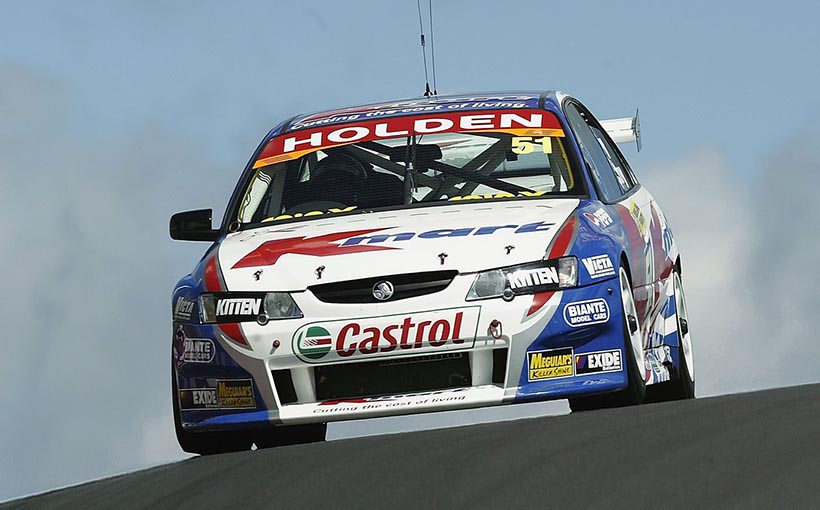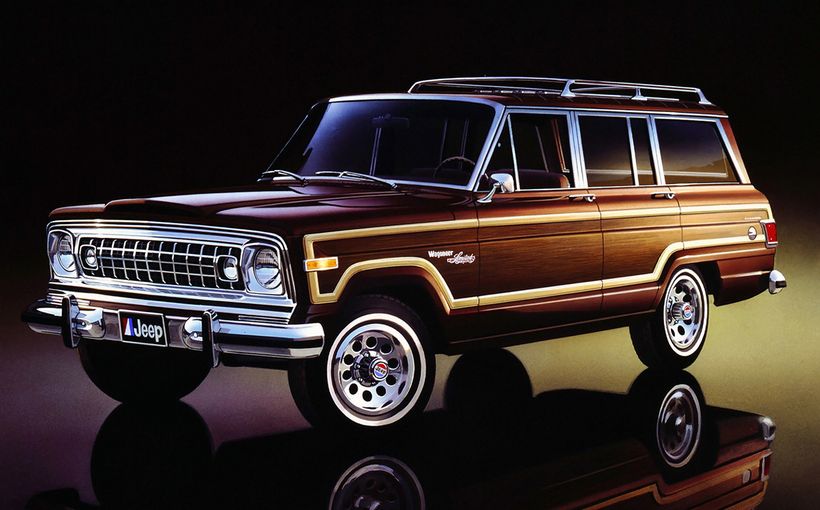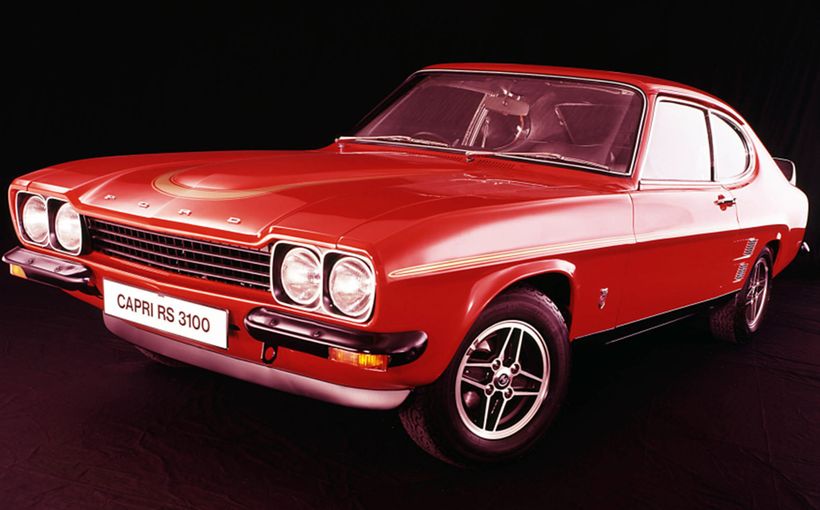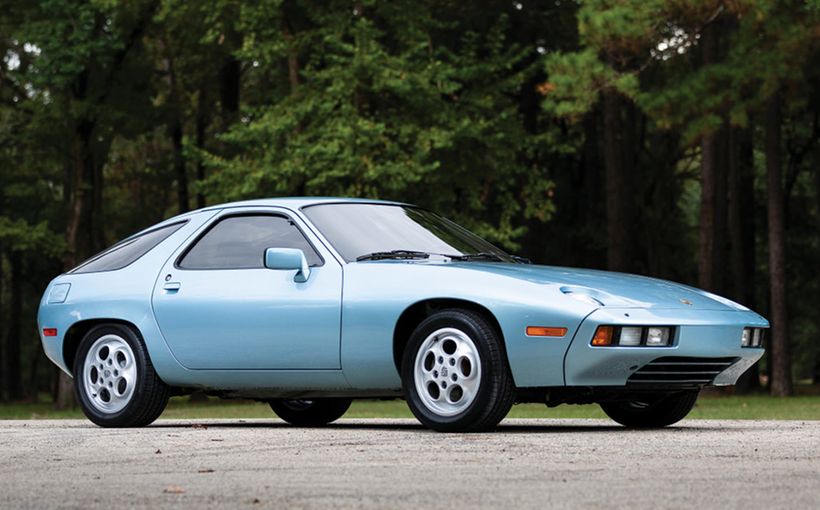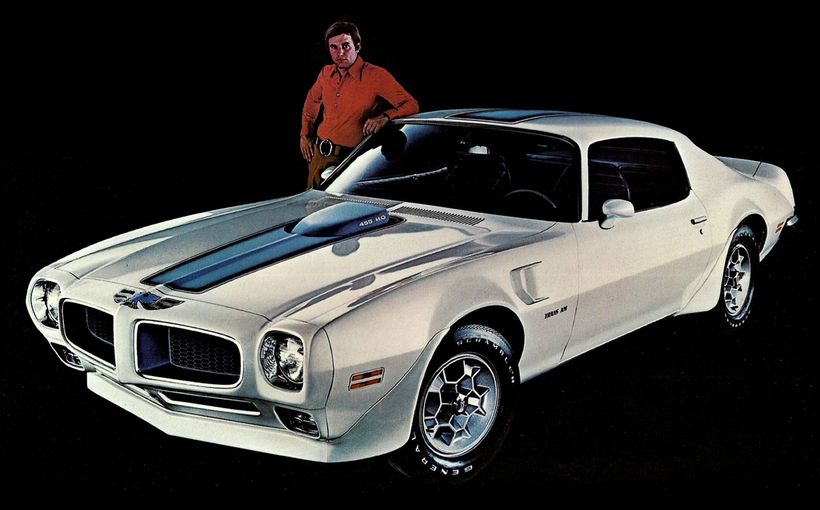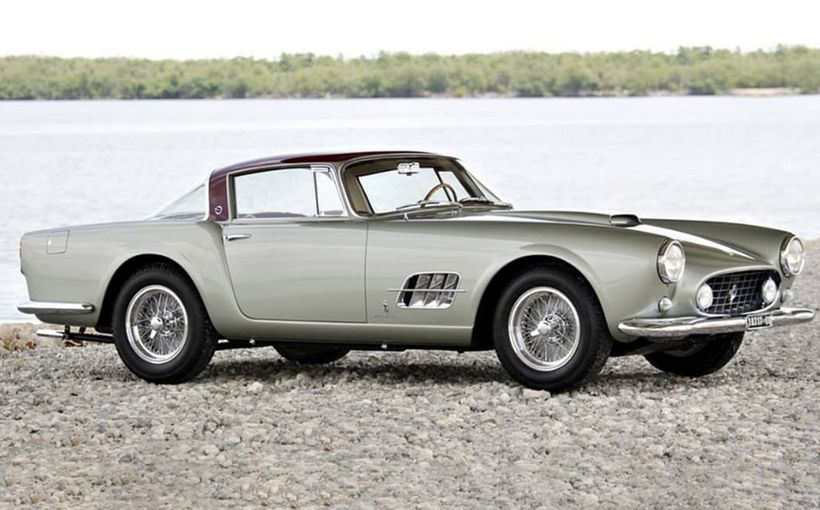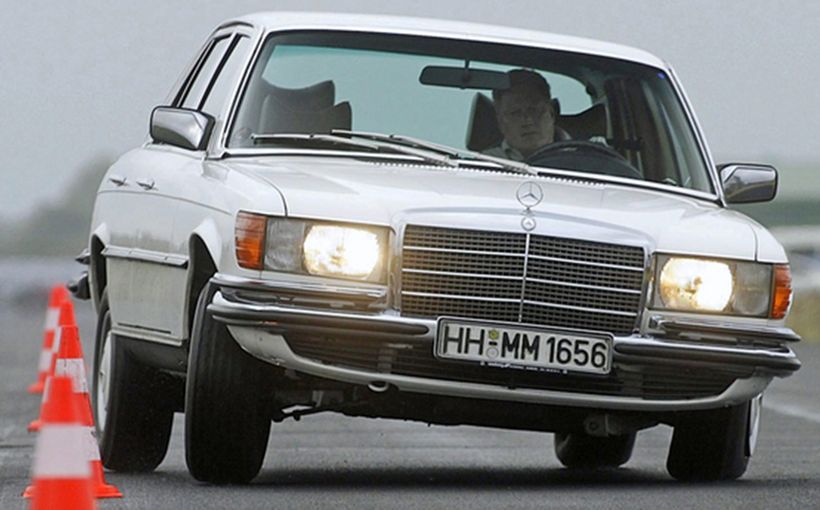VY-VZ Commodore: the ‘Falcodore’ blueprint for Bathurst success

In V8 Supercar racing, Holden’s VY and VZ Commodores appeared to be mild evolutions of their highly successful VT-VX predecessors. However, there were substantial changes under the skin, with adoption of key engineering features of their Falcon rivals to equalise performance.
Even so, these Ford-infused Holdens continued The General’s dominance of the Bathurst 1000 established by their forebears by claiming three consecutive Mountain victories, plus a V8 Supercar championship over four seasons.
The VY’s first Bathurst victory came on debut in 2003 for Greg Murphy and Rick Kelly in a K-Mart-backed Commodore, which they repeated in 2004. The Holden Racing Team gave the following VZ model its first and only Bathurst 1000 win also on debut in 2005, before Rick Kelly scored the VZ’s first and only V8 Supercar Championship Series victory in 2006 with a hard-fought but controversial triumph over Ford’s Craig Lowndes.
These successes came at a time when Ford and Holden had never been closer in performance thanks to an engineering strategy introduced by the teams’ association TEGA called ‘Project Blueprint’, which from 2003 aligned all key performance criteria between Falcon and Commodore.
This bold initiative triggered a welcome spirit of co-operation between the rival makes and an immediate cease-fire in the ugly political battles fought over performance parity, which had raged since the category’s inception a decade earlier.

The same, but different
The primary focus of the new rules, which came into effect January 1, 2003, was to align the three greatest differences between Falcon and Commodore which had defied all attempts by rule makers to achieve genuine performance parity – engines, front suspensions and aerodynamics.
The Commodore had to undergo the greatest changes in its transition from VX to VY. Its new engine and front suspension had to match the existing Ford hardware, which was considered superior for racing applications and therefore the best basis on which a common design or ‘blueprint’ could be modelled between the new VY and Ford’s new-for-2003 BA Falcon.
Since the category’s inception in 1993, the Commodore’s fuel-injected 5.0 litre V8 (which like the Ford V8 was producing around 600 bhp by 2002) used a cast-iron GM racing block with 9.025-inch deck height, matched with aluminium cylinder heads featuring siamese inlet/exhaust ports and an 18-degree valve angle. These were known as the ‘18-degree’ engines.
Under the Blueprint directive, a new GM racing block with the same deck height as Ford’s SVO unit was matched with a new GM racing head, with valve angles and equally-spaced ports considered to be the closest practical equivalent to the Falcon’s SVO ‘Yates’ head.

A common weight for the piston/con-rod/crankshaft assembly was also agreed on and the new ‘Chevrolet’ V8 was mounted in the same position as the Falcon’s (using shared datum points) to ensure uniform centre of gravity and polar moment of inertia. A minimum weight of 740kg over the front axle line was specified for the first time.
Commodore teams updating to the new VY also had to replace the familiar MacPherson strut front suspension with the Falcon’s upper and lower wishbone design. With common datum points between the two cars, this ensured the Commodore’s front suspension was identical to the Falcon’s along with uniform wheelbase, track width etc.
The existing front spoiler under-tray and air intakes shared by the AU and VX were carried over and paired with a new common rear wing profile, to ensure downforce and drag were the same on both cars when measured at the front and rear axle centre-lines.

And, in acknowledging that Holden teams faced a far greater workload in having to develop new engines and front suspensions, teams updating to the VY could initially use their existing 18-degree engines before introducing the latest Blueprint-spec versions. And once that change had taken place, there was no option to revert to the old engine.
Despite these myriad challenges, reigning champion Mark Skaife and HRT came out swinging to win the Clipsal 500 opening round on the streets of Adelaide. It was a commendable achievement. Holden’s anointed factory team had not only built a new full Blueprint-spec VY Commodore in time but had also survived the collapse of its former owner, Tom Walkinshaw Racing (TWR) in 2002.

This had forced Holden’s management to launch an urgent rescue mission to the UK, with the task of securing sole ownership of HRT and its sister K-Mart-sponsored outfit from the crumbling empire before the liquidators moved in.
However, as Holden or Ford were not allowed to have direct ownership of race teams, Skaife was eventually named as the new owner of HRT while John and Margaret Kelly (parents of V8 Supercar drivers Todd and Rick) took the reins of the K-Mart operation.
So, although reigning champs Skaife and HRT looked like they were about to pick up where they left off, the debut win for the new Blueprint VY had flattered to deceive. Marcos Ambrose, Stone Brothers Racing and the new BA Falcon soon took command, with a series of power-packed performances by the Tasmanian which finally cracked The General’s defences wide open.
Ford’s new saviour won six of the 13 rounds, which included a dazzling run of four consecutive victories on his way to securing the 2003 championship. The Skaife/HRT dominance of the previous three seasons had finally been broken, but along the way the K-Mart team and its new VY Commodore shared by Kiwi Greg Murphy and Mildura’s Rick Kelly had a special surprise in store for Holden fans at round 10 of the championship – the Bob Jane T-Marts Bathurst 1000.
They not only won the race, which was Murphy’s third 1000 win and Rick’s first (who at just 20 also became the youngest driver to win it), but the icing on the cake was Murphy’s spine-tingling qualifying lap during the Top 10 shoot-out to nail pole position.

In an awesome display of controlled aggression and blistering speed, the Kiwi drove his VY Commodore into the record books by being the first driver to crack the 2 min 6-sec zone and set the fastest lap ever at Mount Panorama.
His 2 min 06.85 sec effort was a staggering 1.09 seconds quicker than the next fastest qualifier, John Bowe’s Brad Jones Racing BA Falcon – and Murphy admitted to fumbling a gear change coming out of the Dipper! It was a land speed record which stood for seven years and remains one of the most memorable and cherished moments in Bathurst history. Even today, it is still often referred to as ‘The Lap of the Gods’.
Murphy also reaffirmed his title as ‘The Prince of Pukekohe’ later in the year by remaining unbeaten in the annual V8 Supercar round held in his native New Zealand since 2001, claiming his third consecutive round victory on the fast and challenging circuit near Auckland.
The flying Kiwi finished second overall to Ambrose in the championship, in what had been a challenging but rewarding first season for the VY Commodore. However, the following year did not deliver the championship which the VY’s dazzling 2003 Bathurst performance had suggested was there for the taking.

The Ford attack had shifted up a gear with former Holden star Russell Ingall joining Ambrose at SBR in a two-pronged BA Falcon campaign. By the time the 2004 Bathurst 1000 rolled around, the Queensland-based Ford squad not only had another championship by the throat but were also aiming for a 1-2 finish, much to the dismay of the previously dominant HRT.
“So (in 2003) Ambrose had done what many others could not – he’d delivered on his promise (to defeat HRT). But with HRT having won the five previous titles and six of the last seven, there was a natural assumption in many quarters that HRT was still the top dog and 2003 may be just a temporary aberration before the king regained his throne,” noted Chevron Publishing’s review in The Great Race.
“But as the 2004 season unfolded, it seemed more and more likely that what we had seen in 2003 was a general transfer of power. In 2004, Ambrose wasn’t quite as untouchable as he had been the year before – but he still won four of the nine rounds before Bathurst, including leading an impressive Stone Brothers Racing 1-2 at the Sandown 500.
“And far from reclaiming its crown, the HRT looked more like mere mortals than royalty. They won just one of those nine rounds and went to Bathurst a disappointing seventh (Todd Kelly) and 12th (Mark Skaife) in the points. Which meant, of course, that they were no longer even the pick of the Holden teams, let alone the best team overall.”

How the mighty had fallen. The halcyon days of HRT giving Ford a routine kicking were already distant memories for Holden’s factory squad, now under the leadership of its post-TWR owner and lead driver Mark Skaife. Even so, by round 10's Bob Jane T-Marts Bathurst 1000, other Holden teams were determined to again turn the tables on Ford on such hallowed turf.
VY Commodores filled the first four positions on the grid after qualifying, even though reigning champ Murphy was not able to repeat his record-breaking pole position of the previous year. Even so, the mercurial Kiwi and 21-year-old co-driver Rick Kelly claimed a second consecutive win in their K-Mart Commodore, leading home a hungry pack of BA Falcons which filled the next six places.
Ambrose and Ingall duly delivered on their quest for a 1-2 finish in the championship though, with Jason Bright’s PWR VY Commodore the highest placed Holden in third. So although Bright had stolen Murphy’s Pukekohe crown, the Kiwi had again provided Holden’s only major highlight for the season.

2005-2006: The VZ era
Although Ford stuck with the BA for 2005, Holden updated to its latest VZ model; the fourth and final iteration of the third generation Commodore which commenced its incredibly successful V8 Supercar career with the VT in 1998. VZ changes were limited to cosmetic updates, with the basic VY race package from the previous two seasons making a seamless transition into 2005.
The Ambrose-Ingall-SBR-BA Falcon juggernaut also rolled on into 2005, with high expectations of a three-peat by Ford fans. They duly delivered, but this time it was Russell Ingall’s dogged consistency rather than wins that proved decisive in toppling his team-mate to win his first long-awaited championship.
2005 was also the first time that six drivers (three Ford, three Holden) went into the last round with a chance of winning the title. Decided over three races at Phillip Island, Ingall did just enough to secure the championship ahead of Craig Lowndes (Triple Eight Engineering) and Ambrose. It was not only the BA Falcon’s third championship win in succession, but also its first 1-2-3 finish.

However, Mount Panorama continued to be something of a bogey race for the otherwise dominant BA Falcon. Although it claimed both front row starting positions after blinding Top 10 qualifying performances by Ambrose and pole-sitter Lowndes, the cards again did not fall Ford’s way on the Mountain.
And again the top Commodore runners were waiting to capitalise, with a well-judged victory this time to Mark Skaife and Todd Kelly in a welcome - albeit inconsistent - return to form for the embattled Holden Racing Team.
2005 was also the end of a glorious era for Ford and SBR with Ambrose announcing that after five seasons in V8 Supercars he was moving to the US to pursue a career in NASCAR racing. His absence would be sorely missed by SBR, which never won another V8 Supercar title.
2006 was the second and final season for the well-developed VZ and again the championship went down to the wire at Phillip Island’s three-race final round, this time between the Toll HSV Dealer Team (formerly K-Mart team) VZ Commodore of Rick Kelly and Craig Lowndes’ Triple Eight Racing Engineering BA Falcon. The gap between title leader Kelly and Lowndes was a mere seven points.
Lowndes with co-driver Jamie Whincup had already broken the BA Falcon’s Bathurst drought with an emotional breakthrough win earlier in the season, so Ford fans were hopeful of an unprecedented quartet of championship titles to cap another champagne year.

However, it was not to be, with the title being decided in controversial circumstances in which the HSV Dealer Team’s sportsmanship was called into question, as summarised by Chevron Publishing’s review in its official 50-year history of the ATCC.
“After the first two races at the Island, there was no gap at all – either way. Todd Kelly (who went on to win the round for HRT) took pole and won both those races, in each of which Lowndes finished just one spot ahead of Rick Kelly, Lowndes having been impeded by various degrees of obstruction from (Rick Kelly’s HSV team-mate) Garth Tander, who duly received a penalty for his troubles.
“So it would all come down to race three: whoever beat the other would win the crown. Tensions ran high. And in one of the great anti-climaxes of championship history, the worst possible result unfolded: one title contender was judged responsible for the incident which removed his rival from contention.
“On lap two, coming into the hairpin, Kelly nudged Lowndes into a half-spin. The Triple Eight man was left vulnerable to the following traffic and was duly thumped by Will Davison. With the subsequent damage shredding his tyres, Lowndes limped hopefully to the flag: if Kelly did not finish, Lowndes would still be champion on a countback. Kelly, for his part, copped a drive-through penalty for the incident, but cruised on to 18th and the crown.”

Triple Eight did not lodge an appeal but the result left a bitter taste for many, particularly Ford and Lowndes fans. Even some Holden loyalists were uncomfortable with the way the title was decided and weren’t afraid to say so in a torrent of debate on social media.
Indeed, Kelly (who did not win a single round that year) later admitted that it was not the ideal way to win his first (and so far only) championship. However, the result stood and Holden’s VZ Commodore departed V8 Supercar racing in the best way possible – a winner.

